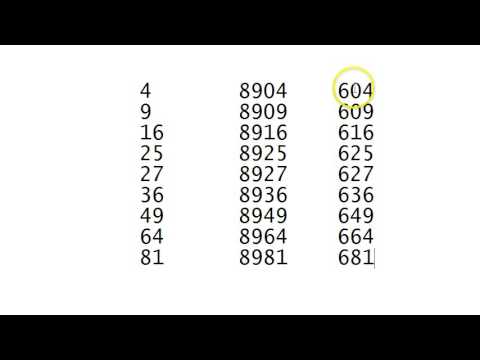Contents:


Do executives have the stomach to say no, even when there is funding to undertake an unbudgeted project? Unlike a static budget where you set it once and repeat the formula, a flexible budget requires constant monitoring and tweaking — with no guaranteed rewards. The hours of analysis and modifications could be rendered futile if predicted conditions, trends or objectives change. They allow managers to predict the effect that changes will have on their company’s income statement and balance sheet while still being able to reflect actual figures. It helps to provide accurate forecasts without using theoretical data since they are based on what occurred.
Finance is lagging when it comes to A.I., according to an expert who studies the field – Fortune
Finance is lagging when it comes to A.I., according to an expert who studies the field.
Posted: Thu, 13 Apr 2023 11:03:00 GMT [source]
Static budgets are often used by non-profit, educational, and government organizations since they have been granted a specific amount of money to be allocated for a period. Historically financial modeling has been hard, complicated, and inaccurate. The Finmark Blog is here to educate founders on key financial metrics, startup best practices, and everything else to give you the confidence to drive your business forward. You can work towards automating your budget since your expenses are directly tied to your revenue. For example, if your business predicts that five units will sell per month at $5 each, you can expect a revenue of $25 a month.
Flexible Budgets and Sustainability
Therefore, they are readily available in the income statement and help to determine the net profit. The columns would continue below with fixed and variable expenses, allowing you to see how your net profit changes based on changes in actual production and revenue. Your flexible budget would then look at revenue, based on both units sold and sales price. The base example is a single facility where production increases, all water usage is variable with production, and no efficiency improvements occur in the use of water. The second example builds on the first with the addition of a fixed component of water.
- For instance, management may consider adjusting the sales price by 1 to 3% to generate excess revenue.
- The company can then input their fixed costs, such as production materials, and determine their variable costs, which may include deliveries and other activities that are influenced by their sales.
- As with any budget, flexible budgets are simply forecast that may change by the time production actually begins.
Hence, we can conclude that there exists an unfavourable variance. There is a place for static budgets when costs are largely fixed — think rent, website, insurance. However, the benefits of rigidity fade when no room is left for emergencies, opportunities and strategic shifts. Small companies and startups may even miss out on new sources of income. This allows for companies to accommodate its needs as factors change throughout the year, such as a high increase in demand for goods or services or a seasonal hike in labor costs.
How to create and implement a flexible budget for your business
What would the debit or credit to the direct material efficiency variance account be for the current… However, if you updated the flexible budget for actual volumes and forecasted revenue was $1,250, then when compared to actual revenue of $1,500, volume is no longer an explanation for the variance. Thereafter, prepare a flexible budget for single or multiple activity levels. A company with high fixed costs will have a lower ratio, meaning it must earn a substantial amount of revenue just to cover fixed costs and stay in business before seeing any profits from sales.
Four Ways to Simplify Taxpaying – Cato Institute
Four Ways to Simplify Taxpaying.
Posted: Thu, 13 Apr 2023 04:00:00 GMT [source]
Most flexible budgets use a percentage of projected revenue to account for variable costs rather than assigning a rigid numerical value at the start. Flexible budgets are essentially budgets that can be adjusted depending upon revenue and cost changes throughout the fiscal year, accounting for expected unpredictability. Companies first account for the fixed costs they expect, or at least costs that they don’t expect to change as the year progresses. They then allow for fluctuating variable costs, reviewing costs periodically to make real-time adjustments. A flexible budget variance is any difference between the results generated by a flexible budget model and actual results. If actual revenues are inserted into a flexible budget model, this means that any variance will arise between budgeted and actual expenses, not revenues.
Example of the Flexible Budget Performance Report
It also depends upon the factors of the how to calculate overtime pay, which are not in the hands of the management. Therefore the predictions can be inaccurate due to these conditions. In the case of a typical business, if it is newly started, it becomes tough to predict the demand for the products/services accurately. Lisa Jo Rudy covers entrepreneurship and small business finance and terms for The Balance. During her career, Lisa launched her own small writing and instructional design business and writes about business for major web publishers such as Harvard Business Publishing. As a teacher and instructional designer, Lisa has created business-related tutorials and interactive courses for universities, educational publishers, and students and adults entering the business world.
California homeless: Cities want $3 billion – CalMatters
California homeless: Cities want $3 billion.
Posted: Thu, 13 Apr 2023 12:03:54 GMT [source]
Sales increase, but factory overhead costs do not increase at a similar rate, since the sales are from inventory that was produced in a prior period. Many costs are not fully variable, instead having a fixed cost component that must be derived and then included in the flex budget formula. It helps to determine the quantity/amount of output to be produced to help the company achieve the desired profit level. It can help in sales, costs, and profit calculation at different levels of operating capacity.
Better yet, when you have real-time budget visibility, you can forecast or update your budget and see those updates reflected on other key metrics that matter to your business. Flexible budgeting puts more pressure on you to have rock-solid financial assumptions as you tie various line items together in the model. And the reality is that the effort you put into tying certain line items together may not be worth the time. Not every line item or set of line items has a strong enough correlation to others for flexible budgeting to work.
Because it is a practical approach that is suitable for dealing with https://1investing.in/-life situations. For sake of illustration, let’s use a very simple, three-month budget for a coffee shop as an example. Over this time period, the shop expects an average of 250 customers per day , each buying one cup of coffee that costs $3. Expense Type Description Examples Fixed Costs that do not change over the short-term, even if there is a shift in the amount of goods/services produced or sold. Rent, lease payments, insurance, interest payments, website fees, certain salaries.
A flexible budget is best used in a manufacturing environment where the budget is able to be based on production volume. Similarly, while a static budget would limit hiring more employees, a flexible budget would adapt to the need for more staff to meet increased demand by increasing the budget for payroll expenses. It’s a budget that is prepared at the beginning of the year and not changed until it’s time to make a new one at the start of the next year.
How do you calculate a flexible budget?
A flexible budget starts with fixed expenses, then layers a flexible budgeting system on top that allows for any fluctuation in costs. Most flexible budgets use a percentage of projected revenue to account for variable costs. This way, budget adjustments can happen in real time while taking into account external factors like economic shifts and rising competition.

A flexible budget on the other hand would allow management to adjust their expectations in the budget for both changes in costs and revenue that would occur from the loss of the potential client. The changes made in the flexible budget would then be compared to what actually occurs to result in more realistic and representative variance. This ability to change the budget also makes it easier to pinpoint who is responsible if a revenue or cost target is missed. Is one that is prepared based on a single level of output for a given period. The master budget, and all the budgets included in the master budget, are examples of static budgets. Actual results are compared to the static budget numbers as one means to evaluate company performance.

At 80% capacity, the working raw materials cost increases by 5% and selling price falls by 5%. At 50% capacity, the cost of working raw materials increases by 2% and the selling price falls by 2%. Using the following information, prepare a flexible budget for the production of 80% and 100% activity. Sales decline, but direct labor costs do not decline at the same rate, because management elected to retain the production staff.
- And with out-of-the-box metrics, templates, and dashboards like the forecast vs. actuals dashboard, you can shorten the budget allocationand planning process from two weeks down to two days.
- It has been “flexed,” or adjusted, based on your real production levels.
- Enter actual activity measures into the model after an accounting period has been completed.
- Additionally, at 50% capacity, working the product costs $180 per unit and it is sold at $200 per unit.
- In aggregate, this works out to an unfavorable variance of $2,400.
The next step is to combine the variable and fixed costs in order to prepare a new overhead budget report, inserting the new flexible budget results into the overhead budget report. However, much to the disappointment of Steve and Kira, the overhead budget report reported major overruns. For each category of overhead, Steve computed a variance, identifying unfavorable variances in indirect materials, indirect labor, supervisory salaries, and utilities. \nThe next step is to combine the variable and fixed costs in order to prepare a new overhead budget report, inserting the new flexible budget results into the overhead budget report. Revenues and expenses are constantly adjusted in flexible budgets for current operating conditions. New environmental regulations might increase the costs of production and could require the purchase of different types of machines.
For example, direct materials are variable costs because the more goods you make, the more materials you need. Steve made the elementary mistake of treating variable costs as fixed. After all, portions of overhead, such as indirect materials, appear to be variable costs. If Skate increased production from 100,000 units to 125,000 units, these variable costs should also increase. \nSome costs are variable — they change in response to activity levels — while other costs are fixed and remain the same.
We’re firm believers in the Golden Rule, which is why editorial opinions are ours alone and have not been previously reviewed, approved, or endorsed by included advertisers. Editorial content from The Ascent is separate from The Motley Fool editorial content and is created by a different analyst team. Mary Girsch-Bock is the expert on accounting software and payroll software for The Ascent.

